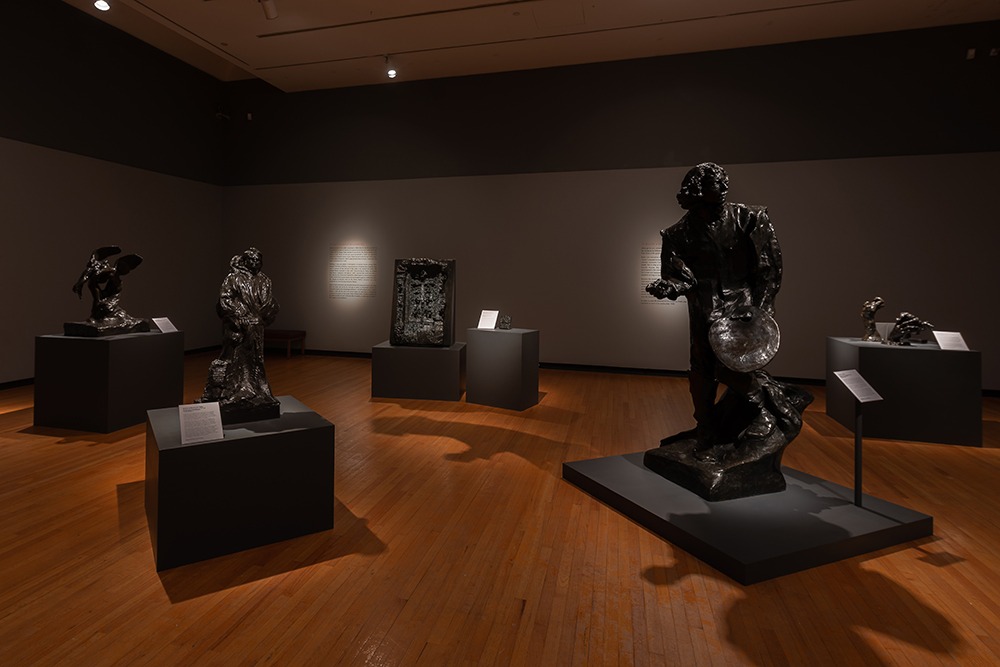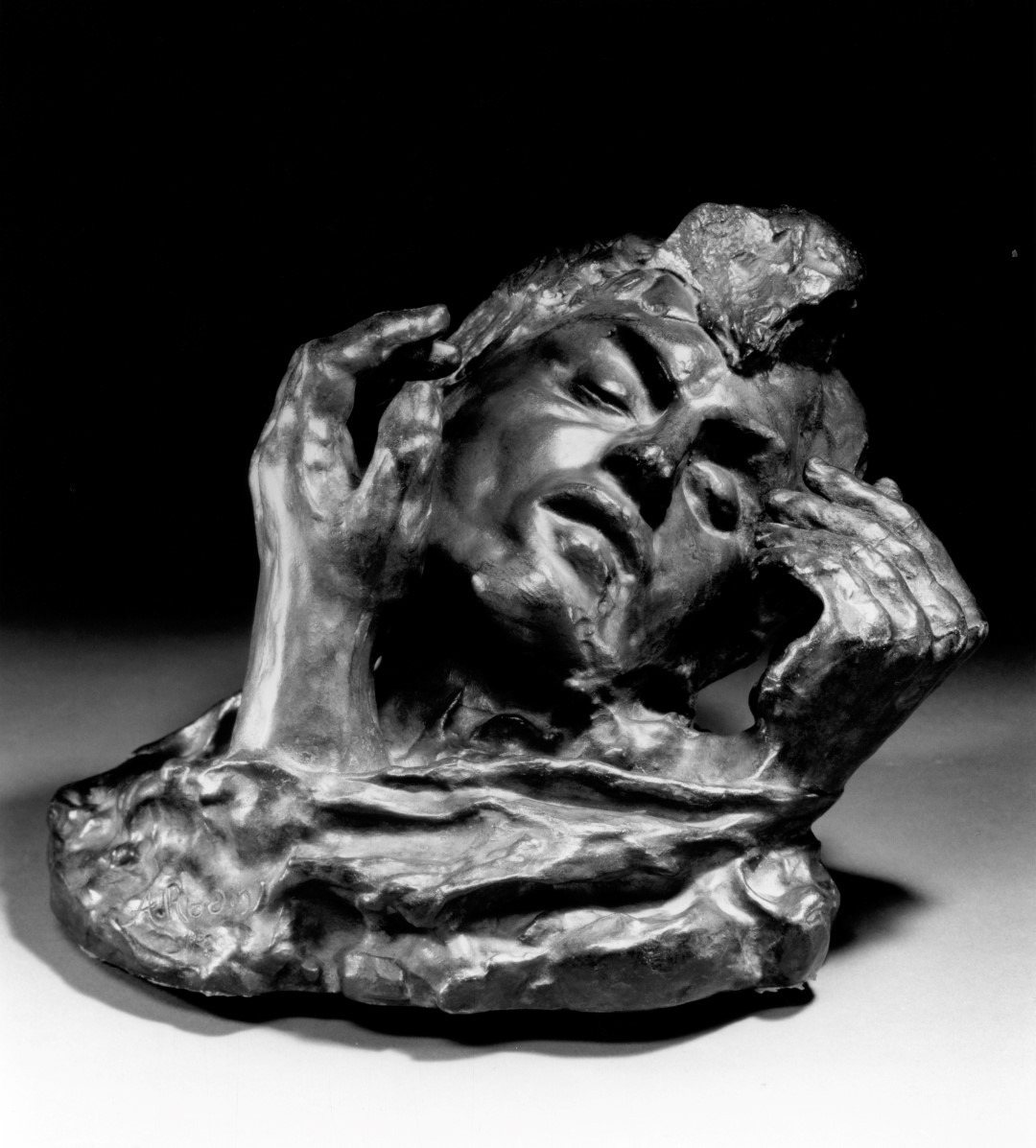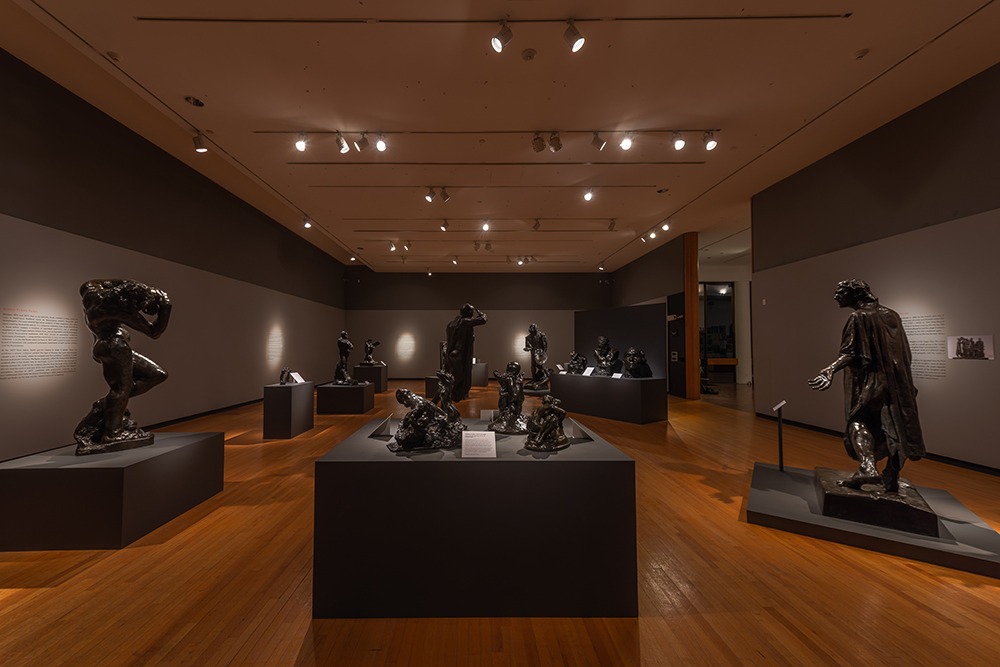By Kurt Loft
. . .
Auguste Rodin
Ageless Beauty in Bronze
. . .
Through October 30
Free
Polk Museum of Art
Details here
. . .
It’s not easy to bring the past into the present, but Auguste Rodin merged the two as well as any artist before or since.
The famed French sculptor, who created the iconic The Thinker, takes center stage through the end of October at the Polk Museum of Art at Florida Southern College in Lakeland. The free exhibition, Rodin: Contemplation and Dreams, includes 40 works from the acclaimed B. Gerald Cantor Collections. It marks the largest installation of sculptures in the museum’s history.
. . .

. . .
Rodin, who lived from 1840 to 1917, has been called both a classicist and a modernist. His bronze sculptures hint of ancient Greek art and their portrayal of the human body. But Rodin brought these otherwise rigid figures to life through suggestions of movement and feeling.
“Rodin is one of the most iconic artists in the history of art, modern or otherwise, with sculptures and a sculptural style that are instantly recognizable,” explains Dr. H. Alexander Rich, executive director and chief curator at the Polk Museum.
“Rodin’s deft ability to mold out of metal relatable human emotion and drama promises to speak across generations. Truly, in addition to the beauty of their craftsmanship, Rodin’s figures succeed in making us feel, too.”
. . .

. . .
Although The Thinker embodies Rodin’s oeuvre more than any single piece, he was prodigious, creating thousands of sculptures and drawings. His nude figures on paper are considered precursors to modern erotic art.

. . .
Although known for his bronze casts, Rodin worked primarily on the original models in clay and many were created by assistants who would mold them after the originals. This exhibition includes some of Rodin’s most familiar works, including Saint John the Baptist Preaching, The Gates of Hell and Three Faunesses.
Rodin developed a love of art in childhood, when he visited museums filled with Greek and Roman sculptures. This experience allowed him to examine in detail how these works were crafted and to soak in their history, myths and stories.
. . .

. . .
In late 19th century Paris, a number of artistic movements were intersecting, such as Realism and Impressionism. Immersed in the cultural shift towards more humanistic themes, says Rich, Rodin approached the ancient technique of bronze sculpture through a “modern lens.”
“The result is sculptures that depict an astonishingly naturalistic sensibility,” he notes, “capturing human emotion and effortless movement.”
. . .
Polk Museum of Art
800 E Palmetto St., Lakeland
Open Tuesdays-Saturdays, 10 am to 4 pm
Sunday 1-5 pm.
Admission Free
polkmuseumofart.org – 863-688-7743
. . .






